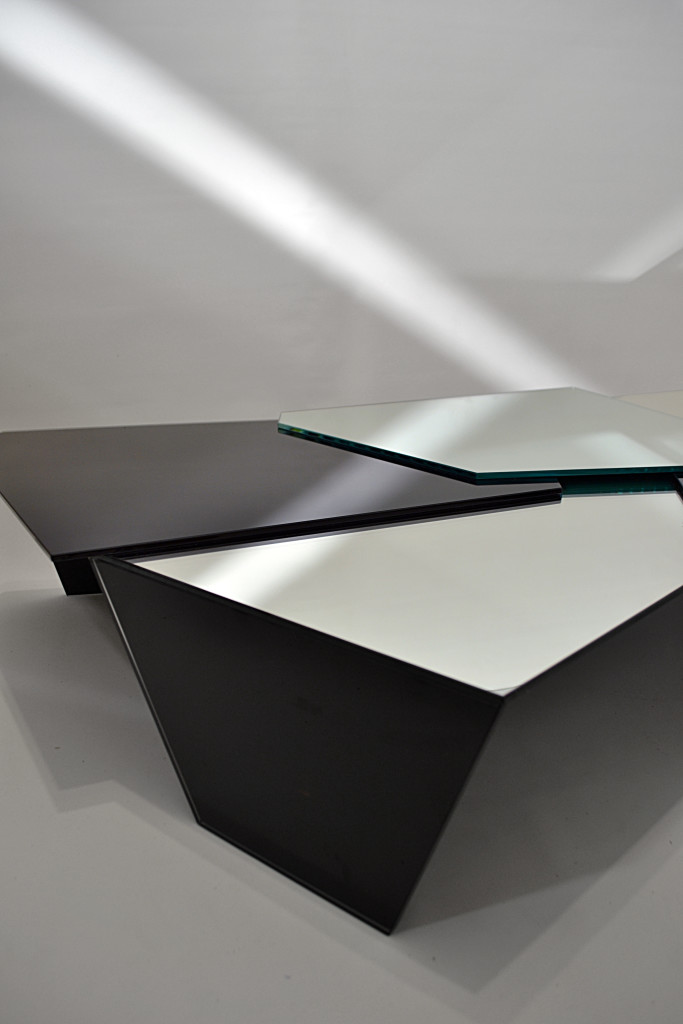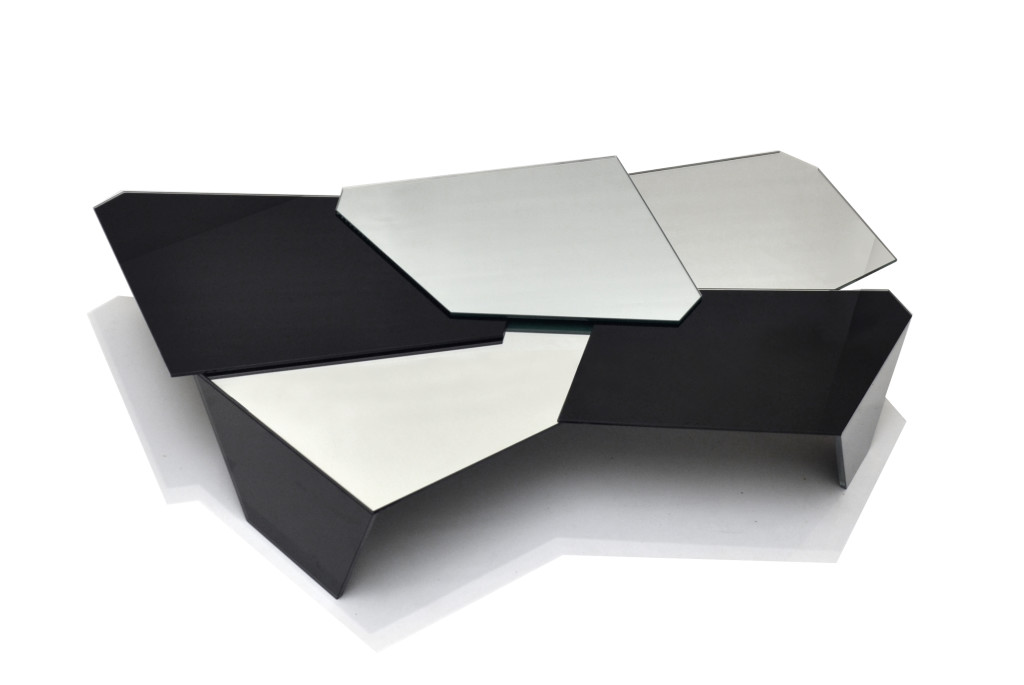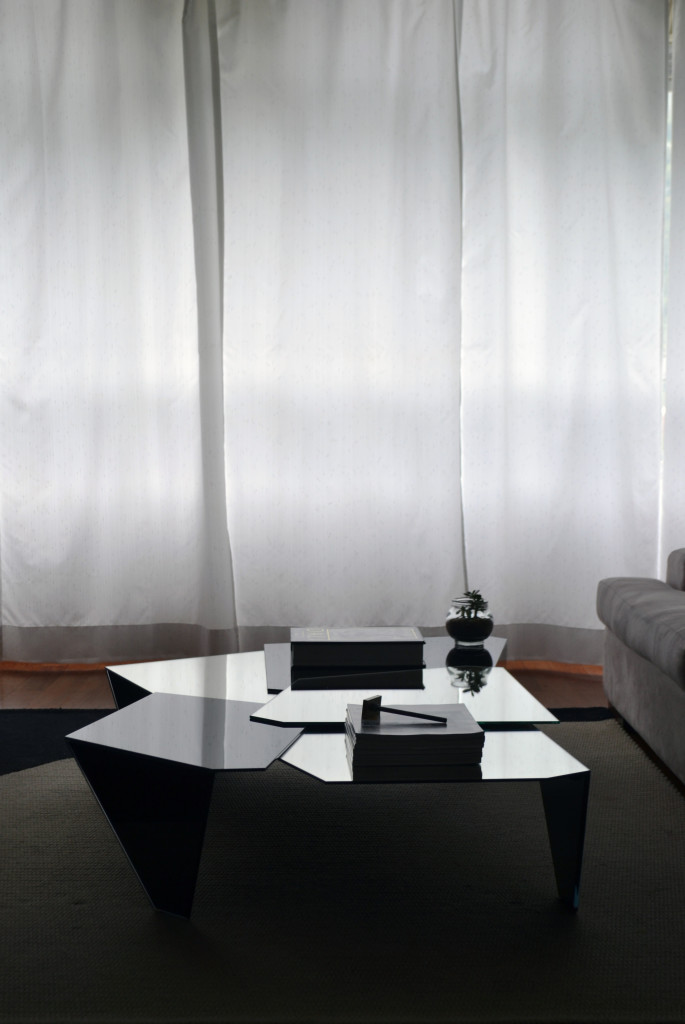The LUZ table was inspired by the city of São Paulo, which has plenty of representative historical and cultural moments. A huge city that shows experience and adaptations in its scars. Like the city, the Luz(light) Table was inspired in this dual instability and, like the city, presents various forms, with movement and overlapping parts. The use of glass reaffirms this idea, because when broken, it generates a series of irregular shatters. It was by imagining the inverse process, where the pieces would come back together to compose an object again that this table was designed. It’s as if it could tell us a little bit of its history of transformation. The name Luz, meaning light in Portuguese, refers to the reflection of the city lights by the mirrors in a famous district in São Paulo.








